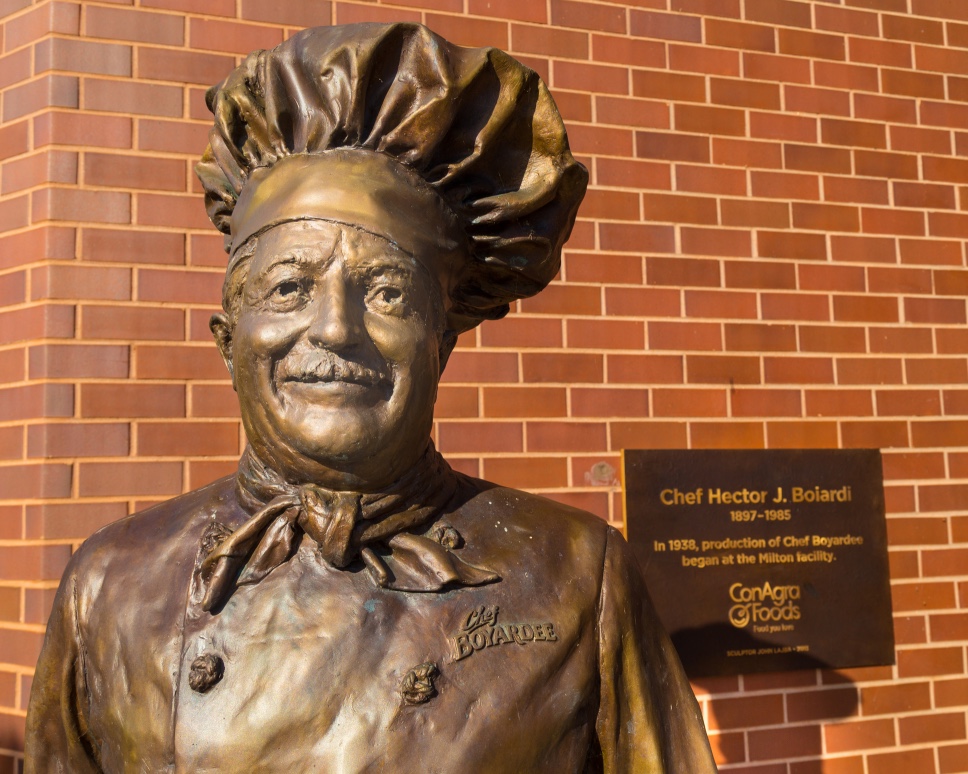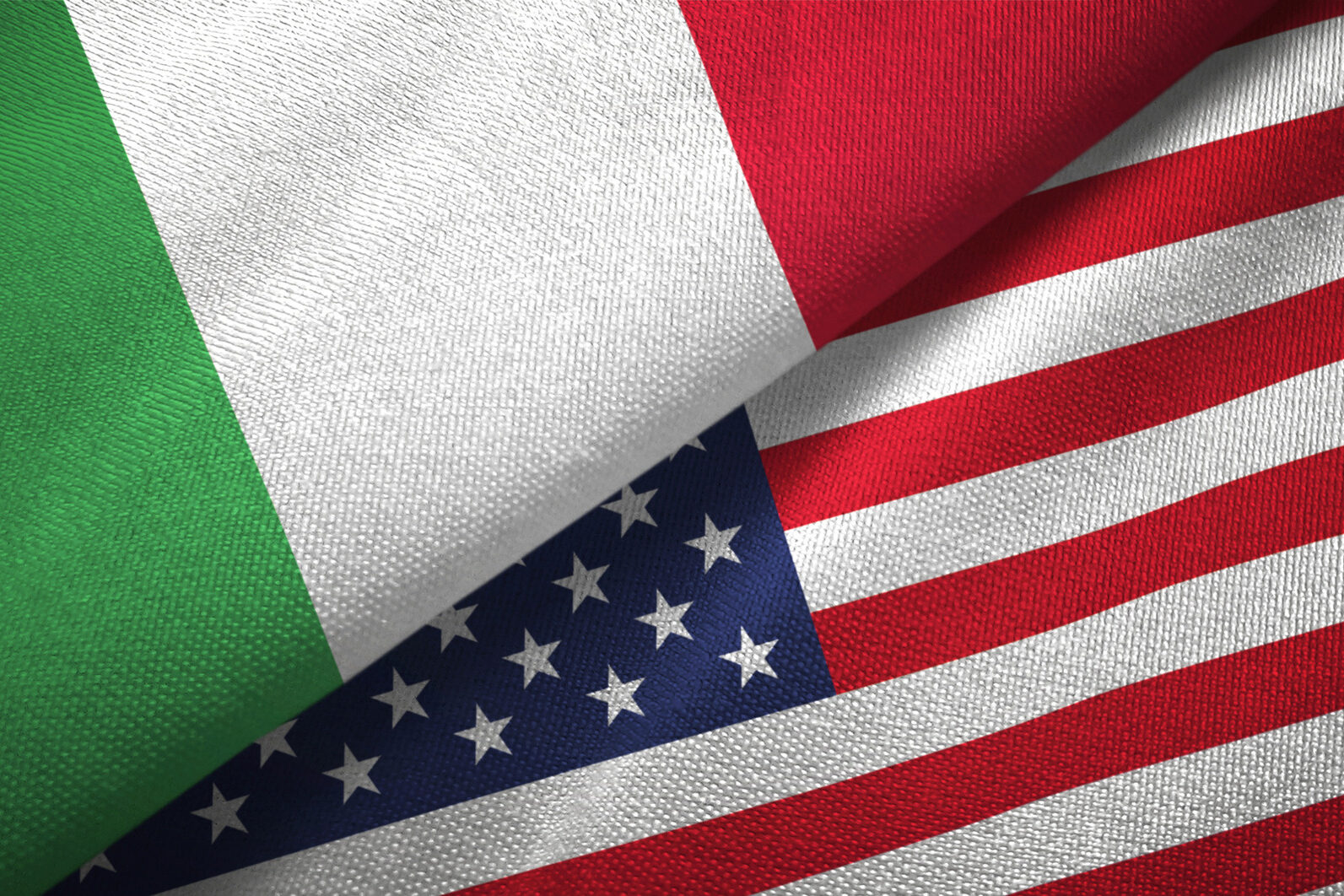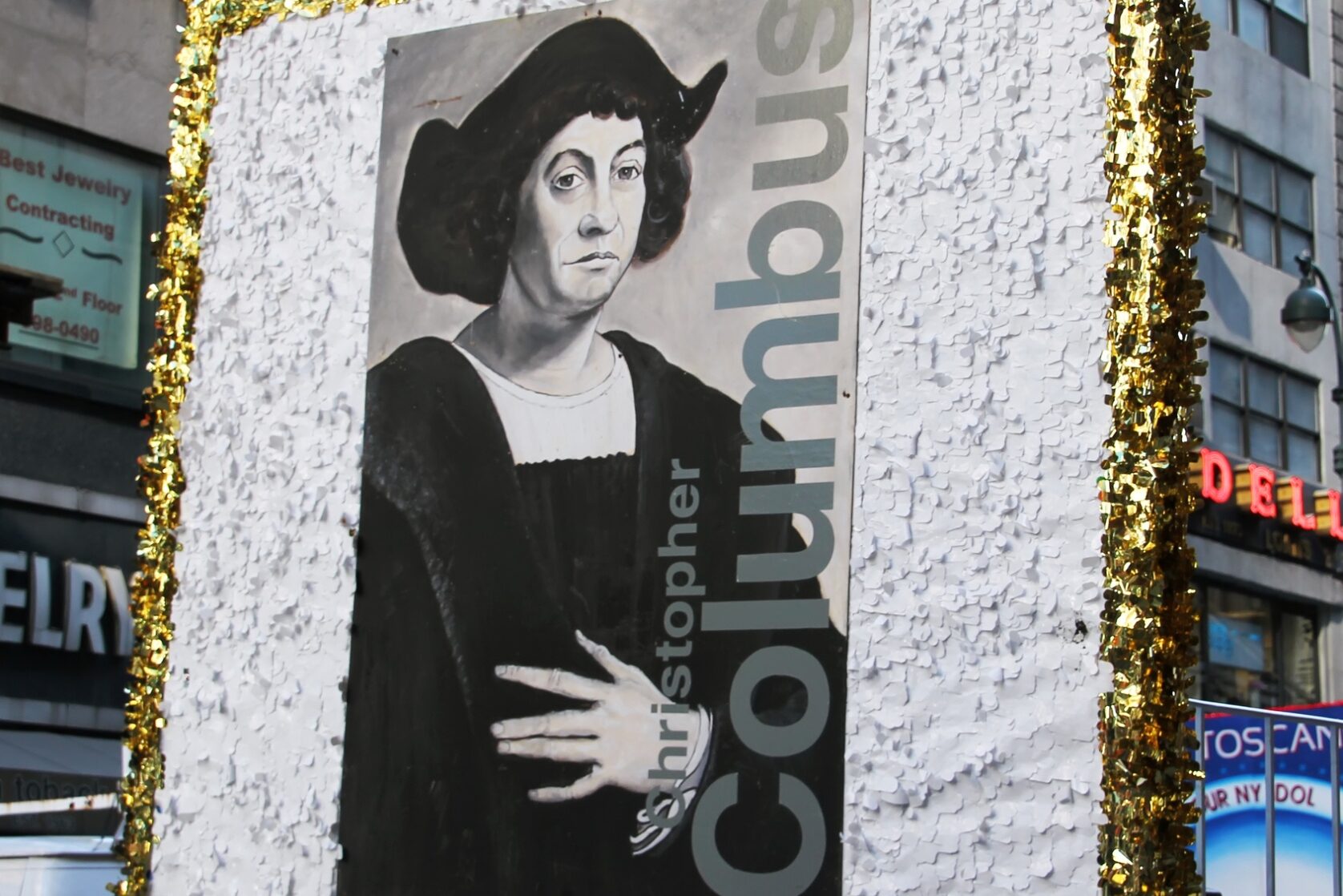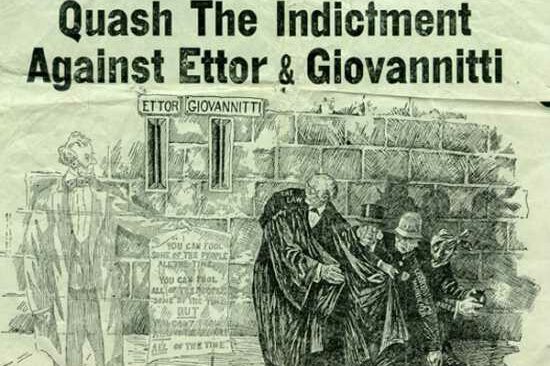Dear Readers,
“Toot! Toot!” — that’s me, tooting my own horn! I began writing for L’Italo-Americano in mid-1977, forty-plus years ago. As 2024 begins, let me pass on some good advice and January jottings to you!
**
Advice for the New Year: nobody can go back and start a new beginning but anyone can start today and make a new ending.
**
Astronaut John Glenn, the first American to orbit the Earth in 1962 passed away in December 2016, at the age of 95. This reminds me once again that the accomplishments of our modern-day astronauts and their voyages were undertaken with the backup of thousands, both in personnel, technology, and money. But to me the real pioneers of travel were our fathers and mothers and our grandparents who left their isolated and obscure villages to begin a journey to what was, for them, like another planet; to a world thousands of miles away they set out, with no money and the added burden of not being able to read or speak one of the world’s most difficult languages. The fact that we are here, literate and able to read our copy of L’Italo-Americano, founded in 1908, represents an Old World dream fulfilled and honored. By supporting the efforts of our American Italian heritage associations, museums, and similar groups, we help assure that our children will never forget what modern-day media has ignored, neglected, or distorted, that is, the history and brilliance of Italian-connected gifts to the civilization of the world.
**
Italian Americans created many of the familiar items we enjoy every day. The Jacuzzi hot tub and spa were invented by the Jacuzzi family, whose seven sons and six daughters came to America in 1907. In 1915, they formed the Jacuzzi Brothers Incorporated, which supplied the American military with propellers. In 1926, they developed the deep well (jet) water pump, that led to the famous whirlpool bath.
Mr. Coffee, the best-selling coffee maker, was invented by Vince Marotta, who also developed a better way to extract oil from coffee beans and invented the paper coffee filter. Since 1972, more than 50 million Mr.Coffees have been sold. An estimated 10 billion Mr.Coffee paper filters are sold annually.
The convertible sofa was invented by Bernard Castro (1904-1991), who came from Italy and opened an upholstery shop in New York in 1931. In 1945, he invented the famous space-saving sofa that even a child could open.
Chef Boyardee, the man behind the nation’s leading brand of spaghetti dinners, pizza mix, sauce, and pasta, was really Ettore Boiardi, who began as a chef’s apprentice at age 11, eventually opened a restaurant in Cleveland, Ohio, in 1924 and began packaging pasta and sauce for his customers to take home. In the 1930s, he began selling pasta and sauce in cans. A food distributor convinced him to change the spelling of his name to make it easier for Americans to pronounce. During World War II, the company was the largest supplier of rations for the US and Allied Forces.
Antonio Meucci invented the telephone in 1871, five years before Alexander Graham Bell, but the impoverished inventor did not have the funds (about 25 USD) to file a patent.
The chocolate bar exists today in part due to Domenico Ghirardelli. In 1867, he perfected a method to make ground chocolate. Today, Ghirardelli chocolate is sold all over the world, including the square in San Francisco named after him, where his chocolate factory — now a shopping center — still stands.
Mr. Peanut and the Planters Peanut Company were created by Amedeo Obici and Mario Peruzzi, two Italian immigrants. Obici, who came to America from Oderzo in 1889, began selling five-cent bags of peanuts on the street. In 1897, he took Peruzzi as his partner. By 1930, the two had four huge factories and raked in over 12 million USD annually. Today, the Planters Peanut Company has over 5,000 employees.
The cough drop was created by Vincent R. Ciccone, who began his career in the 1930s as a janitor at the Charms Candy Co. and retired as the company’s president and chief executive officer. Ciccone secured 20 patents, including the “Blow Pop,” a lollypop with a bubble gum center. He died at age 81, in 1997.
Charles Atlas, born Angelo Siciliano, invented the body-building technique called “Dynamic Tension” in 1921 and was dubbed “America’s most perfectly developed man” by Physical Culture Magazine. By the 1950s, the former Coney Island janitor had over one million followers. He died in 1972 aged 79, while jogging too soon after a heart attack.
The ice cream cone was invented by an Italian immigrant to New Jersey named Italo Mancini in 1896.
The Big Mac, a McDonald’s sandwich classic, was invented by Jim Delligatti, owner of a McDonald’s franchise in Pittsburgh, Pennsylvania. Since its introduction in 1967, more than 14 billion Big Macs have been sold, making it the most popular sandwich in the world.
Cari lettori,
“Toot! Toot!” — sono io, che suono il mio corno! Ho iniziato a scrivere per L’Italo-Americano a metà del 1977, più di quaranta anni fa. Con l’inizio del 2024, permettetemi di darvi alcuni buoni consigli e appunti di gennaio!
**
Consigli per il nuovo anno: nessuno può tornare indietro e ricominciare da un nuovo inizio ma chiunque può iniziare oggi e scrivere un nuovo finale.
**
L’astronauta John Glenn, il primo americano ad orbitare attorno alla Terra nel 1962, è morto nel dicembre 2016, all’età di 95 anni. Ciò mi ricorda ancora una volta che i successi dei nostri astronauti moderni e i loro viaggi sono stati intrapresi con il supporto di migliaia di persone, sia in termini di personale, tecnologia e denaro. Ma per me i veri pionieri del viaggio sono stati i nostri padri, le nostre madri e i nostri nonni che hanno lasciato i loro villaggi isolati e oscuri per iniziare un viaggio verso quello che era, per loro, come un altro pianeta. Partirono per un mondo a migliaia di chilometri di distanza, senza soldi e con il peso aggiuntivo di non essere in grado di leggere o parlare una delle lingue più difficili del mondo. Il fatto che siamo qui, alfabetizzati e in grado di leggere la nostra copia de L’Italo Americano, fondato nel 1908, rappresenta un sogno del Vecchio Mondo realizzato e onorato. Sostenendo gli sforzi delle nostre associazioni, dei musei e dei gruppi italoamericani per il patrimonio italiano, aiutiamo a garantire che i nostri figli non dimenticheranno mai ciò che i media moderni hanno ignorato, trascurato o distorto, vale a dire il contributo italiano alla storia e allo splendore nel mondo.
**
Gli italoamericani hanno creato molti degli oggetti familiari di cui beneficiamo ogni giorno. La vasca idromassaggio e la spa Jacuzzi furono inventate dalla famiglia Jacuzzi, i cui sette figli e sei figlie arrivarono in America nel 1907. Nel 1915 fondarono la Jacuzzi Brothers Incorporated, che fornì eliche all’esercito americano. Nel 1926 svilupparono la pompa idrica a pozzo profondo (jet), che portò alla famosa vasca idromassaggio.
Mr. Coffee, la caffettiera più venduta, è stata inventata da Vince Marotta, che ha anche sviluppato un modo migliore per estrarre l’olio dai chicchi di caffè e ha inventato il filtro di carta per il caffè. Dal 1972 sono stati venduti più di 50 milioni di Mr.Coffee. Si stima che ogni anno vengano venduti circa 10 miliardi di filtri di carta Mr.Coffee.
Il divano trasformabile fu inventato da Bernard Castro (1904-1991), originario dell’Italia, che aprì un negozio di tappezzeria a New York nel 1931. Nel 1945 inventò il famoso divano salvaspazio che anche un bambino poteva aprire.
Lo chef Boyardee, l’uomo dietro il marchio leader nazionale di spaghetti, pizza, salse e pasta, era in realtà Ettore Boiardi, che iniziò come apprendista chef all’età di 11 anni, alla fine aprì un ristorante a Cleveland, Ohio, nel 1924 e iniziò a confezionare pasta e sughi da portare a casa dei suoi clienti. Negli anni ’30 iniziò a vendere pasta e sughi in lattina. Un distributore di cibo lo convinse a cambiare l’ortografia del suo nome per renderlo più facile da pronunciare per gli americani. Durante la seconda guerra mondiale, l’azienda divenne il più grande fornitore di razioni per gli Stati Uniti e le forze alleate.
Antonio Meucci inventò il telefono nel 1871, cinque anni prima di Alexander Graham Bell, ma l’indigente inventore non aveva i fondi (circa 25 dollari) per depositare un brevetto.
La tavoletta di cioccolato esiste oggi anche grazie a Domenico Ghirardelli. Nel 1867 perfezionò un metodo per produrre il cioccolato macinato. Oggi il cioccolato Ghirardelli è venduto in tutto il mondo, compresa la piazza di San Francisco a lui intitolata, dove si trova ancora la sua fabbrica di cioccolato, ora centro commerciale.
Mr. Peanut e la Planters Peanut Company sono stati creati da Amedeo Obici e Mario Peruzzi, due immigrati italiani. Obici, arrivato in America da Oderzo nel 1889, iniziò a vendere per strada sacchetti di noccioline da cinque centesimi. Nel 1897 prese come socio Peruzzi. Nel 1930, i due avevano quattro enormi fabbriche e guadagnavano oltre 12 milioni di dollari all’anno. Oggi la Planters Peanut Company conta oltre 5.000 dipendenti.
La pastiglia per la tosse è stata creata da Vincent R. Ciccone, che iniziò la sua carriera negli anni ’30 come custode presso la Charms Candy Co. e si ritirò come presidente e amministratore delegato dell’azienda. Ciccone ottenne 20 brevetti, incluso il “Blow Pop”, un lecca-lecca con un centro di gomma da masticare. Morì all’età di 81 anni, nel 1997.
Charles Atlas, nato Angelo Siciliano, inventò la tecnica di body-building chiamata “Tensione Dinamica” nel 1921 e fu soprannominato “l’uomo più perfettamente sviluppato d’America” dalla rivista Physical Culture. Negli anni ’50, l’ex custode di Coney Island aveva oltre un milione di follower. Morì nel 1972 all’età di 79 anni, mentre faceva jogging, subito dopo un infarto.
Il cono gelato fu inventato da un immigrato italiano nel New Jersey di nome Italo Mancini nel 1896.
Il Big Mac, un classico dei panini di McDonald’s, è stato inventato da Jim Delligatti, proprietario di un franchising McDonald’s a Pittsburgh, in Pennsylvania. Dalla sua introduzione nel 1967, sono stati venduti più di 14 miliardi di Big Mac, rendendolo il panino più popolare al mondo.































